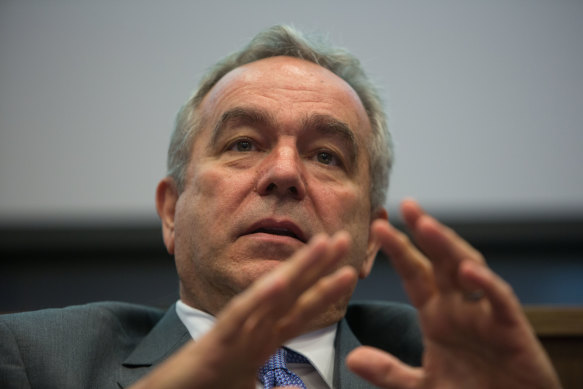This was published 3 years ago
US top diplomat to visit Solomon Islands amid China pact concerns: report
America’s top Indo-Pacific diplomat will reportedly head to the Solomon Islands amid concerns about an agreement that would allow China to send its military to the South Pacific nation.
Kurt Campbell, who serves as the National Security Council Co-ordinator for the Indo-Pacific, will travel to the island nation this month, according to a Financial Times report.

American diplomat Kurt Campbell’s planned trip to the Solomon Islands follows lobbying efforts by Australia and New Zealand.Credit: Andrew Taylor
The China-Solomon Islands agreement, if finalised, would allow Chinese navy ships and defence forces to be based in the Solomon Islands to protect billions of dollars in Chinese infrastructure investment.
The Solomon Islands rejected days of lobbying from Australia and New Zealand to reconsider the deal after details of the agreement surfaced last month.
The Financial Times reports that Campbell is expected to be accompanied by a top State Department official, Daniel Kritenbrink.
Australian Defence Minister Peter Dutton told reporters earlier on Saturday that members of Australia’s government had spoken to leaders in the Solomon Islands recently, Australian Broadcasting Corporation’s defence reporter wrote on Twitter.
“Officials such as the High Commissioner [in the Solomon Islands] had had ‘a lot of contact’, publicly and privately,” Andrew Greene wrote.
Dutton was sceptical of China’s assurances to the Solomon Islands that the base wouldn’t become a military port. ABC quoted Dutton as saying: “At the moment, they’re telling the Solomon Islands government that there won’t be a military port in the Solomon Islands. I doubt that very much, and I don’t think it’s sincere, and I think it’s propaganda that should be called out.”
Security experts in Canberra and Washington are concerned about China’s reach into the South Pacific, where Beijing could disturb sea lanes between Australia, New Zealand and North America.
During World War II, the Solomon Islands were the scene of fierce fighting between US and Japanese forces at the Battle of Guadalcanal in 1942.
Get a note directly from our foreign correspondents on what’s making headlines around the world. Sign up for the weekly What in the World newsletter here.